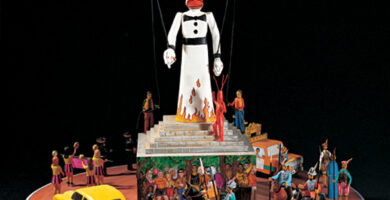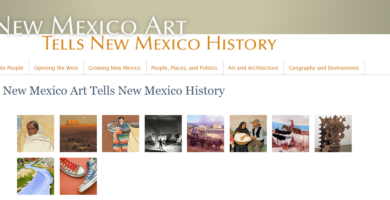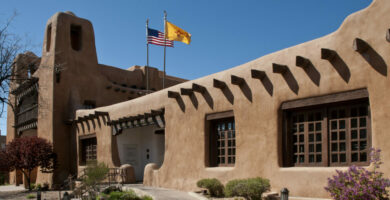
The Humanities Project: An Online Educational Resource
Featured Curriculum
Visual Art and Poetry
This guided exploration investigates the links between poetry and visual art, through deep looking and study of information surrounding William Penhallow Henderson’s drawing and Walt Whitman’s poem of the same name: When Lilacs Last in the Door Yard Bloom’d, as well as the historical event that inspired Whitman’s work.
The 1970 Protests & Violence at the University of New Mexico
Protest, civil disobedience, war, and the right to a free press are all threads that are woven through the tapestry of United States history. This curriculum uses samples from the New Mexico Museum of Art’s photography collection to tug on those threads through documentary photography.
Spanish Colonial Architecture
This curriculum focuses on the architecture of the Spanish Colonial Period in New Mexico. The mission churches were the most significant architecture during this period, and they have been painted and photographed by numerous artists over the years.
Route 66: The Mother Road
Route 66 was a highway spawned by the demands of a rapidly changing United States. This curriculum summarizes the origins of the fabled highway and traces its path through New Mexico’s past and present.
Connecting Cultures in Architecture
Much of the architecture of New Mexico is influenced by multiple cultures. Students living anywhere in the state can see different styles of architecture in their local schools, civic buildings, and main streets. These physical expressions of cultural values and aesthetics and our understanding of them serve to help us understand the cultural history of New Mexico and its connections to the rest of the world.
Ancestral Pueblo Architecture
New Mexico has a rich and distinctive architectural history. From the prehistoric great houses of the Ancestral Pueblo people, to the most progressive architects of today, New Mexican architecture has developed with a strong relationship to place and a strong appreciation for indigenous styles.
The Great Depression & Farm Security Administration Photography
During the Great Depression, photographers were sent out under the auspices of the Farm Security Administration, in order to take photographs that would drum up support for the program. One of the locations visited by photographers was rural New Mexico, and the photographs that were taken remain a unique snapshot of this era in New Mexican history.














